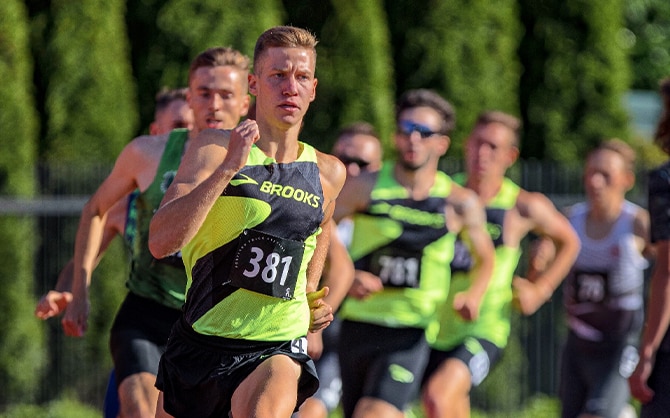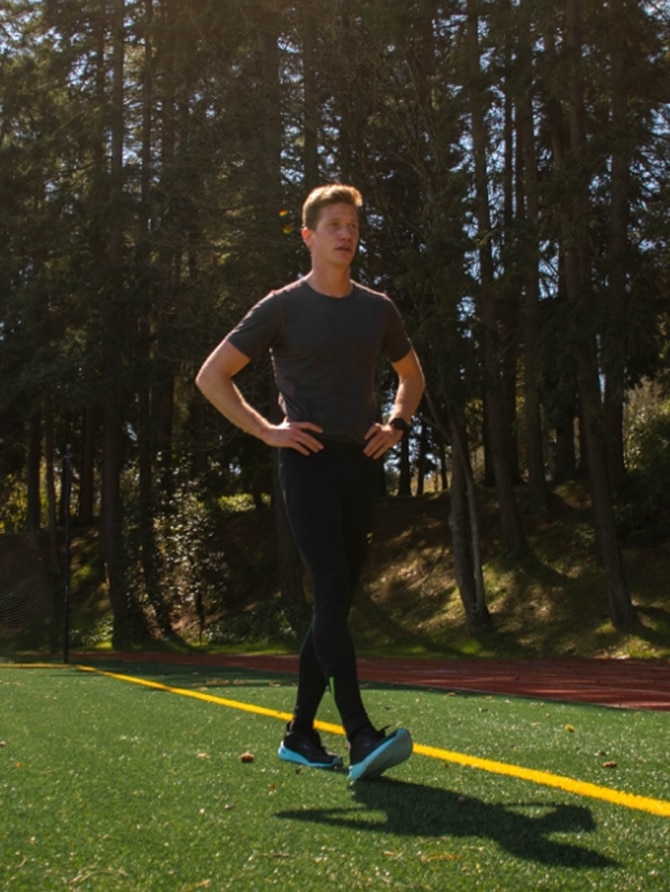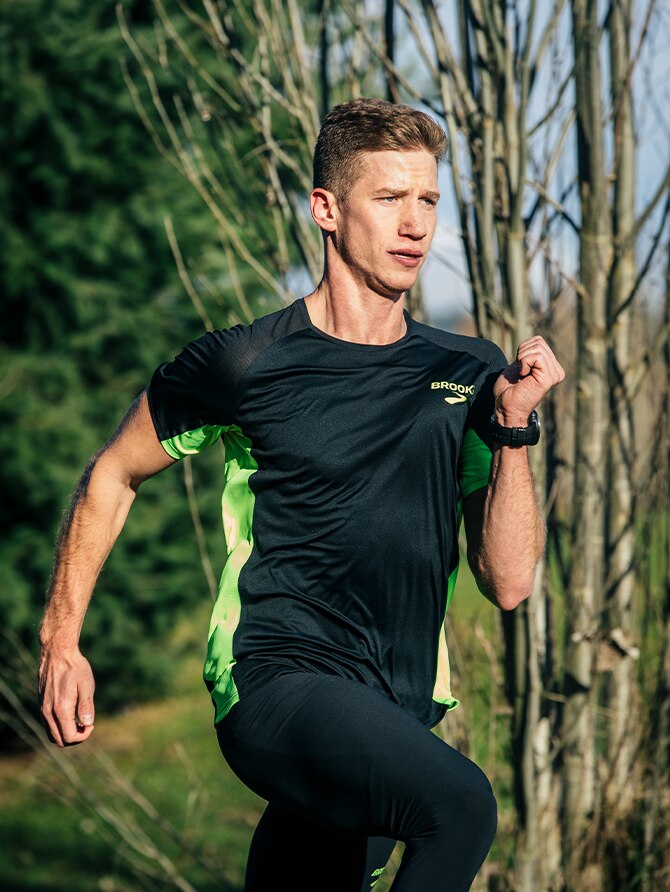Passion on pause

A Brooks Beast shares his path to recovery from a serious running injury.
A runner’s journey
Brannon Kidder began his running career as a seventh grader on the track in Lancaster, Ohio. The sport started as a fun activity after school for Brannon, but it quickly turned into a passion. He went on to run in college at Penn State and then joined the Brooks Beasts as a pro in Seattle where he now lives and trains.
“Running has always meant a lot to me but it has evolved over time. It has given me purpose, structure, education, community, career, and so much more.”
On June 5, 2020, much of what defines Brannon was suddenly up in the air — he tore the posterior medial root of his meniscus. Many meniscus tears can be treated without surgery. Some tears need a trimming of the torn portion, which leads to a few weeks recovery. Brannon’s injury was not that simple. Without a full repair, Brannon risked a continual fraying of his meniscus as it slid around in his knee joint. The full recovery time? Four months.
Read Brannon’s account of his injury recovery process, how he dealt with not being able to run, and his advice for coping with injury.
The extra time away from the sport allowed me to reflect, take a step back, and hash out why I run."
The recovery
My injury had a huge impact on my life because not only is running my passion, it’s also my full-time job. Under normal circumstances most everything I do in my life is in some way impacted by running, from diet to sleep and even leisure activities.
After my surgery, I was basically confined to my house aside from rehab appointments for my knee. There wasn’t a lot I could do for my job except to get healthy.
This is what my recovery looked like:
- The first two weeks: I was totally non-weight bearing on my right side.
- At two weeks: I could begin to “toe-touch” meaning I was allowed to begin putting incrementally more weight through my injured side.
- At four weeks: I gradually weaned off of the crutches while still relying heavily on the knee brace I had used since surgery.
- At six weeks: I was finally able to remove my brace and start walking on my own. Almost a decade of running 60-plus mile weeks was seemingly undone by this first six weeks of recovery.
- The next 10 weeks: With some serious rehab and time, I went from struggling to walk through a grocery store unaided to finally running again. In late November and early December, I began alternating short stints of running with some walking in between until I was able to run continuously.
- Currently: Full strength and training in earnest.
During the recovery process I tried to stay as patient as possible and have faith that I could still come back and be better than ever. I stayed sane by setting small, short-term goals for myself. I also tried to focus on executing every rep well and with intention. If I was only allowed to do a handful of exercises that day, I wanted to make every single rep count.

A fresh perspective
Throughout the recovery process I came to appreciate running like never before. In my previous 14 years of running, I had never taken such a long time off. It gave me a fresh perspective.
Typically, I’ll take a couple weeks off after a season. In that time, I go from dying for a break to itching to run again in about three days. This was the first time I had ever taken long enough off to get over that hump. I had broken the “habit” and I no longer woke up every day feeling like I needed to run.
This was an interesting realization when I had gone through so much pain and effort to get back to running. The extra time away from the sport allowed me to reflect, take a step back, and hash out why I run. It is easy to go on autopilot and just keep doing something because you always have. Now I run with intention and can draw on those reasons for motivation.

A few words of advice
If you are going through an injury, be patient. You can do many things to heal as quickly as possible but at the end of the day, it’s going to take time.
Next, make sure you prioritize healing over maintaining fitness. You are probably going to lose some fitness either way, but getting healthy will go much further than trying to do too much. You don’t want to prolong your injury.
Finally, I encourage runners to focus on their own recovery timeline and not worry about what others are doing. It’s so easy to get discouraged when you see workouts and runs that teammates, friends, or even athletes on social media are doing. Have faith and understand you can get back to your former fitness and beyond if you do the right things now to recover.
